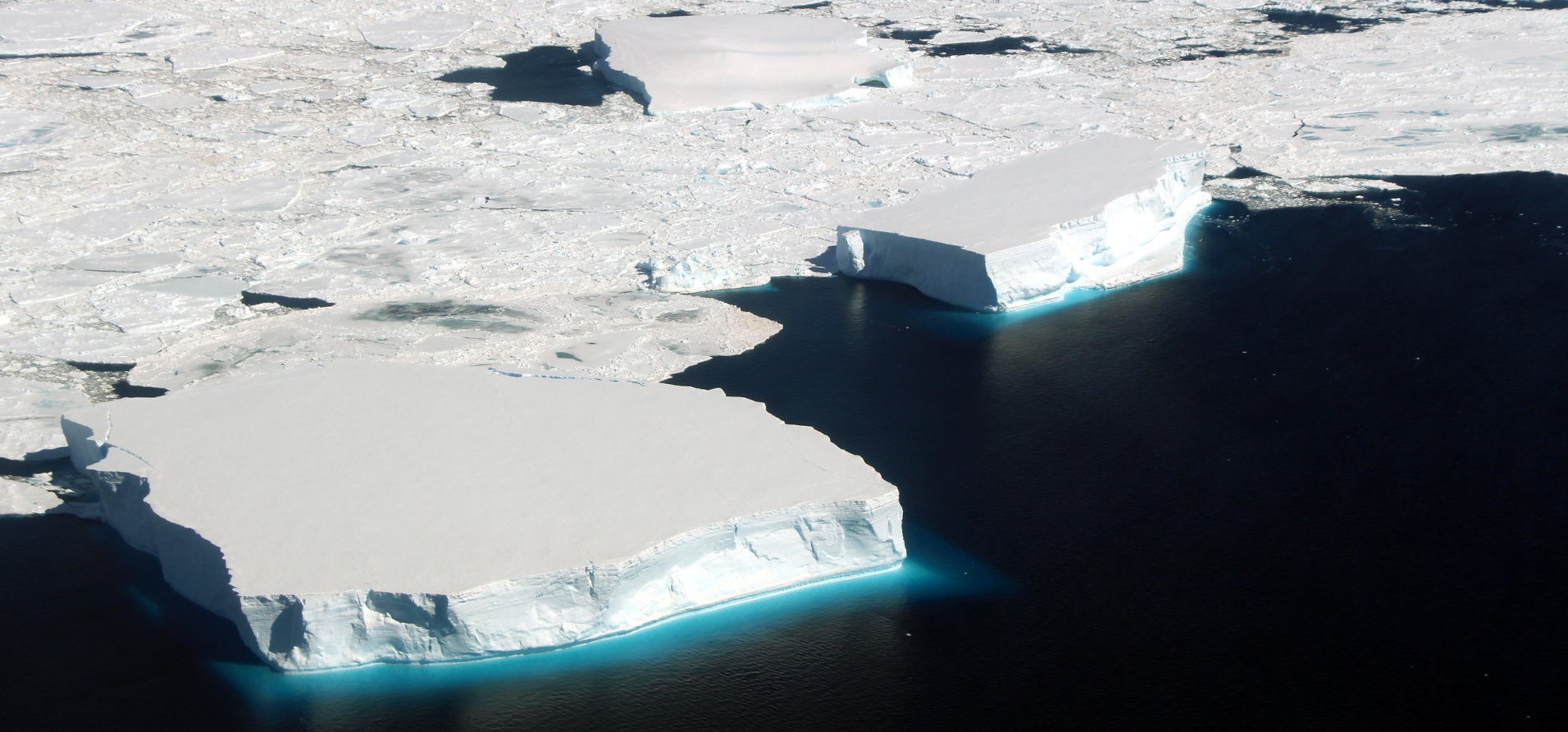Retreat of the perpetual ice: Antarctica continues to melt

At two million square kilometers, the Antarctic ice sheet has shrunk to about the size of Mexico – the lowest level since records began. The exact reason is unclear.
The extent of sea ice in Antarctica has fallen this year to its lowest level since records began in the late 1970s. The record of February 25, 2022 is the second sharp decline in the ice sheet in just five years, Chinese researchers from Sun Yat-sen University in Guangzhou and the Laboratory for Southern Naval Science in Zhuhai report in the journal “Advances in Atmospheric Sciences”.
The researchers have investigated ocean currents and weather phenomena behind the melt, but are apparently still puzzled. Because while the ice in the Arctic is rapidly receding due to global warming, the ice in the Antarctic has been growing by around one percent every decade since the 1970s.
Less than two million square kilometers of ice
But after an unusual decline had already been determined in 2017, it happened again this year at the end of summer in the southern hemisphere at the end of February: For the first time, the extent of the Antarctic ice fell to less than two million square kilometers. The extent was around 30 percent lower than the average for the years 1981 to 2010.
The climate change service of the EU program Copernicus had already reported that the extent of Antarctic sea ice measured daily in February had reached its lowest level since records began in 1979.
Unprecedented heat in East Antarctica
According to the World Weather Organization (WMO), the east of Antarctica in particular has recently experienced “extraordinary and unprecedented heat”. On March 18, minus 12.2 degrees were measured at the Concordia research station. That’s 40 degrees warmer than the region’s average for this time of year, and 20 degrees warmer than the previous record in March, the WMO reported. The station has been operated by Italy and France since 2005 and is located on a 3200 meter high plateau.
Heat records at several measuring stations
The Dumont d’Urville station registered a record temperature of 4.9 degrees Celsius for the month of March. March 18 was the coldest at 0.2 degrees. At the Vostok station, minus 17.7 degrees were measured, also a heat record. Vostok holds the record for the coldest temperature ever measured: According to WMO data, minus 89.2 degrees were measured there in July 1983.
The whole region is considered the driest, windiest and coldest region in the world. The reason for the unprecedented temperatures is an “atmospheric flow,” explained French meteorologists. This describes a band of moisture-saturated air a few kilometers above the earth’s surface that transports heat and moisture.
“This event must rewrite the record books and our expectations of what is possible in Antarctica,” tweeted Robert Rhode of the environmental data institute Berkley Earth. “Is it just an extremely unlikely event, or is it a sign that more is to come? Nobody knows at the moment.”
High temperatures also in the Arctic
Even if it is not possible at the moment of an event to attribute it to climate change, one of the clearest signs of global warming is the accumulation and intensification of heat waves.
In parts of the Arctic at the North Pole, exceptionally high temperatures have recently also been measured, said a WMO spokeswoman. Due to man-made climate change, temperatures in the Arctic have already risen more than twice as much as the global average. It was only in December that the WMO recognized a temperature record of 38 degrees in Verkhoyansk in Siberia. It was measured on June 20, 2020. A record was also measured in Antarctica in 2020: 18.3 degrees.


